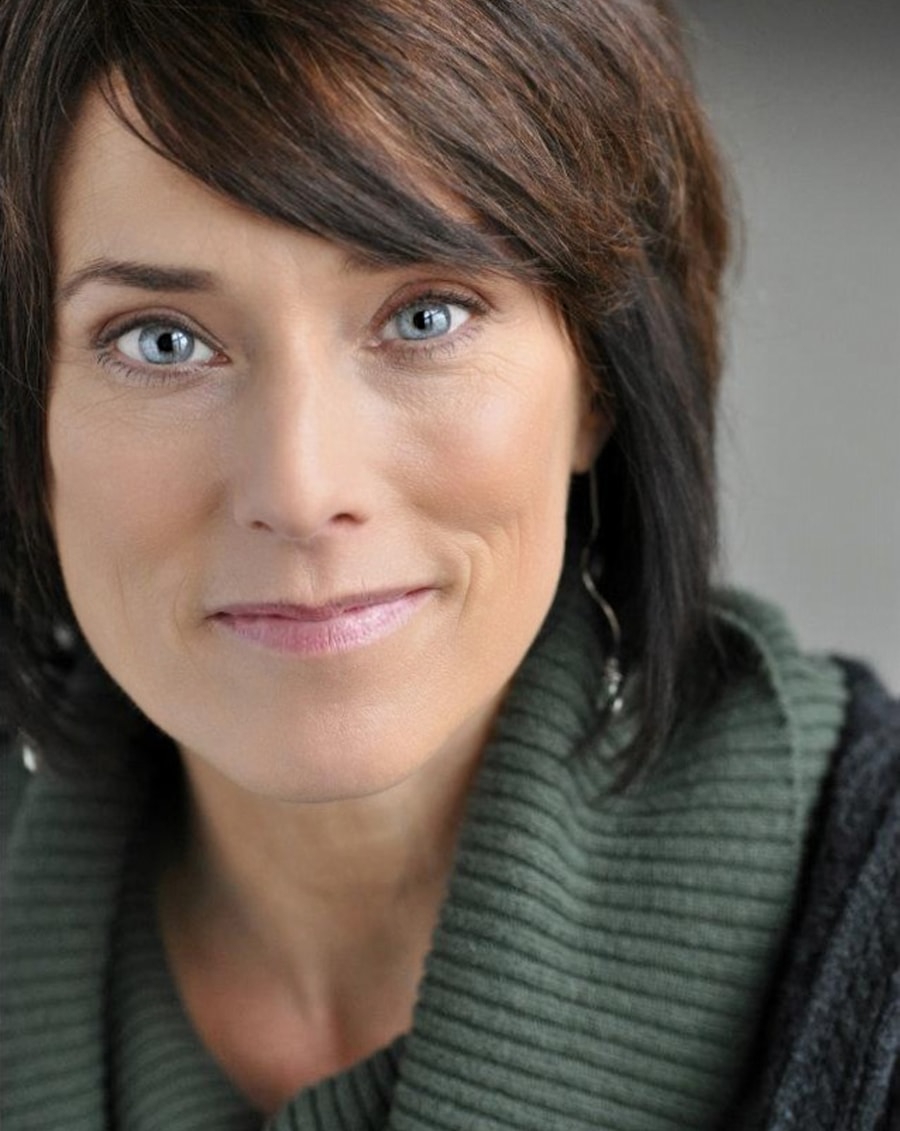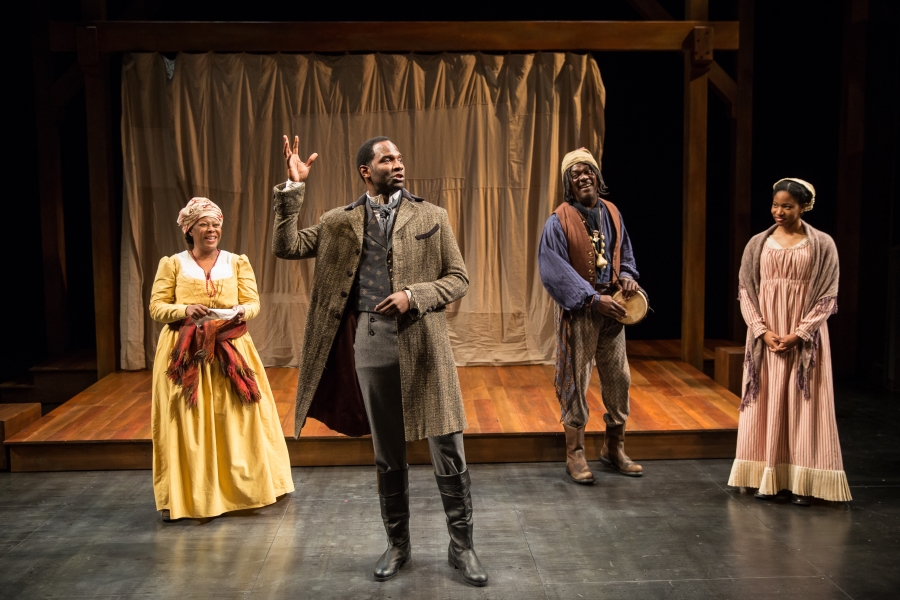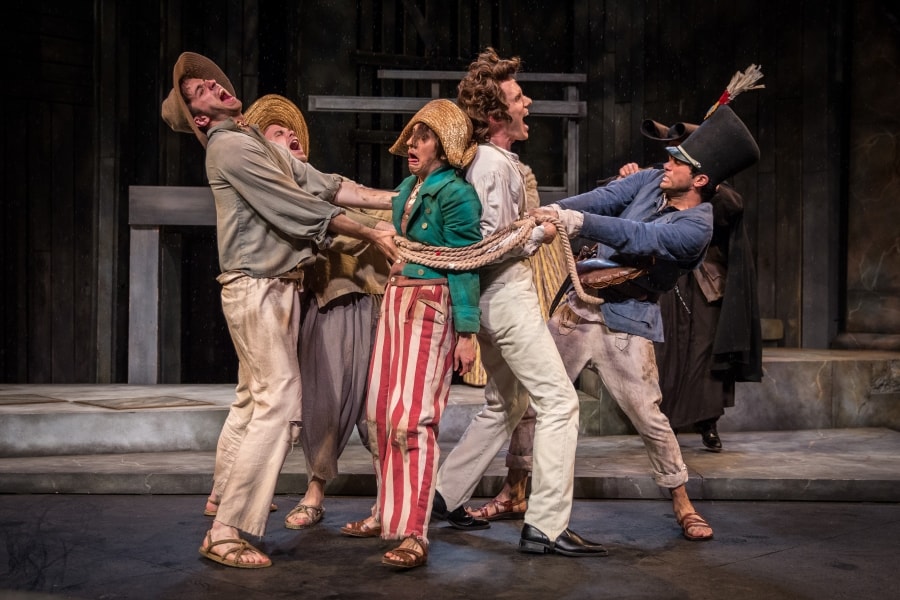SPRING GREEN, WISC.: Spring Green is known for Frank Lloyd Wright’s Taliesin estate, cheese factories, and its sprawling golf courses. The lush village, with a population of 1,647, is also home to American Players Theatre. Nestled below the Wisconsin River on 110 acres of land, the company boasts an outdoor amphitheatre and an intimate indoor performance space. Summer theatregoers flock to the site for picnics on the grounds by day and starlit performances of classic plays by night. We spoke to artistic director Brenda DeVita via email about programming a repertory summer season and the obstacles of mounting theatre outside.

Who founded American Players Theatre, when, and why?
APT was founded in 1977 by Randall Duk Kim, Anne Occhiogrosso, and Charles J. Bright, with the goal of establishing a major classical repertory theatre. In 1979, feeling the need for a permanent home away from urban areas, they acquired land outside of tiny Spring Green. The first performance, A Midsummer Night’s Dream, was held on July 18, 1980.
Tell us about yourself and your connection to APT.
The first time I sat under the sky on a hillside with about 800 others, watching the best Romeo and Juliet production I had ever seen, I fell in love with APT. “Take him and cut him into little stars…” Under the stars… yes. It was love.
In the 23 years since, I have worked in several positions, learning every aspect of the organization I could. (It’s amazing what you are allowed to do if you are willing to do it for free.)
For the last 13 years, I served as casting director, associate artistic director, and most recently as the artistic director. Building on the original impulse of the founders that these challenging plays require focus and dedication, I helped to form our Core Acting Company and our Apprentice/Journeyman Program—affording actors an artistic home with the prospect to grow and to be great. As a former actor, I understood what a rare and glorious opportunity this was for everyone—audience included.
What sets your theatre apart from others in your region?
APT is a classical outdoor theatre that performs in a nine-play season in true rotating repertory in the rolling hills of rural Wisconsin. We do classical plays in the woods. Literally. More than 110,000 people come every summer to see shows in our 1,100-seat outdoor Hill Theatre and our 200-seat indoor Touchstone Theatre.
We have a core company of actors and artisans who have committed their lives to the exploration and the playing of the classics. The unique demands of our setting and the specificity of our aesthetic attract like-minded artists who revel in its rigor and rewards. Together we have the freedom to learn and grow… and even fail. That’s a gift.

Who is your audience?
We are bold to say we have one of the best audiences in the world. They are intelligent, curious, and dedicated. They are uniquely invested in listening to great poetry and stories. People from all over the country travel to APT each summer, as well as teachers and farmers from down the road. This is their theatre.
We are unusual in that we are a sort of hybrid of a regional theatre model and a destination festival theatre. Sixty percent of our audience comes from within an hour’s drive. The rest, a more intrepid sort, come from further afield and vacation in the area. They travel to APT prior to the shows, picnic on our 110 acres, hike up the hill, and sit under the stars, leaning in to watch Shakespeare, Shaw, Williams, Stoppard, and the like. They are so dedicated and come prepared for any kind of weather—they’re like Green Bay Packer fans. They are truly unique theatre fans.
Tell us about your favorite theatre institution other than your own, and why you admire it.
I grew up in the ’80s and Steppenwolf was mind-blowing for me, to my understanding of what theatre could be, both to a community and to a community of artists—that they are integral to each other’s healthy existence. The idea of a company of actors dedicated to a common aesthetic, allowed to learn and create together, in combination with an audience allowed to be a part of their very growth as artists—that was seminal for me.
How do you pick the plays you put on your stage?
Great words and great actors. Shakespeare plays and our acting company are at the center of choosing our season. Our seasons are built on dense verbal texts, complicated language, and idea plays. We believe the plays we get to work on are great plays; doing them well is where we focus our efforts. So we work with directors to specifically create projects centered on our acting company. We have the luxury of working with our actors year after year; we understand their strengths and have built a lot of trust. We capitalize on that. Those relationships between the actor and the words and the story are where our aesthetic lives.

What’s your annual budget, and how many artists do you employ each season? Our current budget is $6.3 million. We have 38 in the acting company, 50 others on the artistic staff (including directors, designers, voice and text staff, etc.), and about 70 on the production staff. In total, our staff is just over 225 people, with 25 on the year-round staff.
What show are you working on now?
The first half of the season is in rehearsals now, and that includes The Comedy of Errors, Death of a Salesman and An Ideal Husband in the Hill Theatre, and The African Company Presents Richard III and Eurydice in the Touchstone Theatre. The second half opens in August, with Arcadia and King Lear in the Hill Theatre, and Endgame in the Touchstone. And then we’ll have one last 2016 production, Mary’s Wedding, in the Touchstone from late October to late November.
Anything else in your season that you’re especially looking forward to?
I am excited about everything, as we are working on nine shows at a time. But if I have to choose, I am ecstatic to see our company doing Death of a Salesman and King Lear side by side. I am also very intrigued by how complicated and deeply human our production of An Ideal Husband is. It often can feel melodramatic and, well, insignificant. We have found it to be incredibly satisfying and delightful.
Strangest or funniest thing you’ve ever seen (or put) on your stage?
It usually involves unexpected entrances by the likes of a flying squirrel or a luna moth—landing on just the right hat on just the right word…
What are you doing when you’re not doing theatre?
Traveling with my kids. Baking bread. Lots of dinner parties. Visiting my 15 siblings. On occasion I love to sky dive… to keep it all interesting.
What does theatre—not just your theatre, but the American or world theatre—look like in, say, 20 years?
It will be far more interesting than it is at present—thrillingly vibrant in its variety. Technology will expand us in one direction and “less is more” will take us in the other. New voices will become more distinct, as well as emerging voices that will blend into new unrecognizable poetry… if we all just keep listening.


